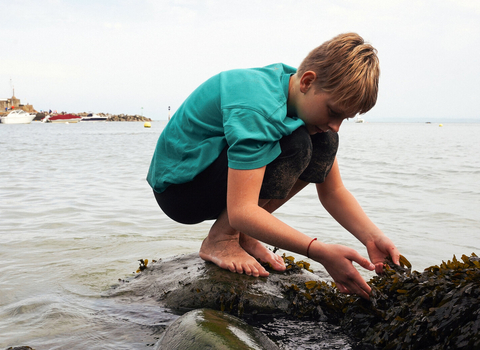Explore the intertidal species living in our rockpools by taking a trip to your local beach or rocky shore.
Learning Outcomes
By the end of the session, students should be able to:
- Rockpool while keeping themselves and the wildlife safe.
- Identify common intertidal species found in Manx rockpools.
Session Outline
- Shore Safety: Learn about what species you can and can’t touch and how to move safely over slippery rockpools.
- Species Identification: Look at different pictures of common critters before we head down the beach to the rockpools.
- Finding Rockpool Critters: Identify the species for real as your search for critters under seaweed and rocks with nets and buckets (provided). Learn what adaptions these critters have made to survive in rockpools.
- Safely Releasing Critters: Release the critters you have collected in your bucket back into the rockpools.
Curriculum Links
- Scoillyn Eco/ Eco Schools Link: Marine: understand our impacts on the world’s oceans & how we can make positive differences for our sea.
- Sustainable Development Goal (SDG) Link: 14. Life Below Water: Conserve & sustainably use the oceans, sea and marine resources for sustainable development.
Possible Locations
- North (Port Mooar): Rockpools are accessed from the car park down a large, pebbled beach and free parking is available in a small car park at the end of a single-track road.
- East (Douglas): Beach accessed via a ramp opposite the end of Summer Hill Road. Disk parking is available on the Promenade directly above the beach.
- South (Port Erin): Rockpools found to the north and accessed across the sandy beach (opposite the Cosy Nook Café). Parking available in the beach carpark and along Shore Road.
- West (Niarbyl): Free parking available in the café car park for minibuses and coaches. Beach accessed by foot down a steep single-track road from the car park.
Timing
- Please note that dates and times are limited due to tide times.
- It is best to rockpool at low tide therefore it is ideal to start rockpooling 1-1.5hrs before low tide (during an ebbing tide) to avoid the tide coming in unexpectedly.
- MWT Education Officer, Beth Penhallurick, will be able to advise on appropriate dates and times.

